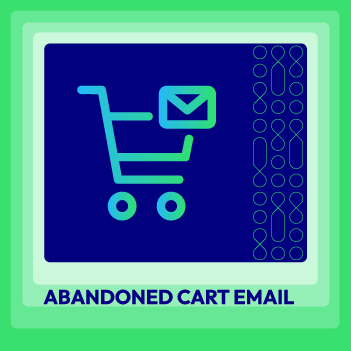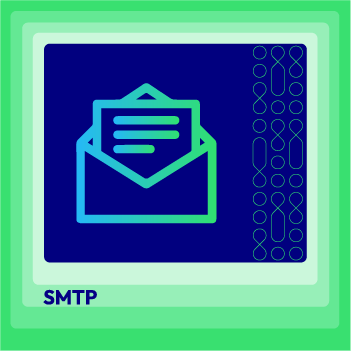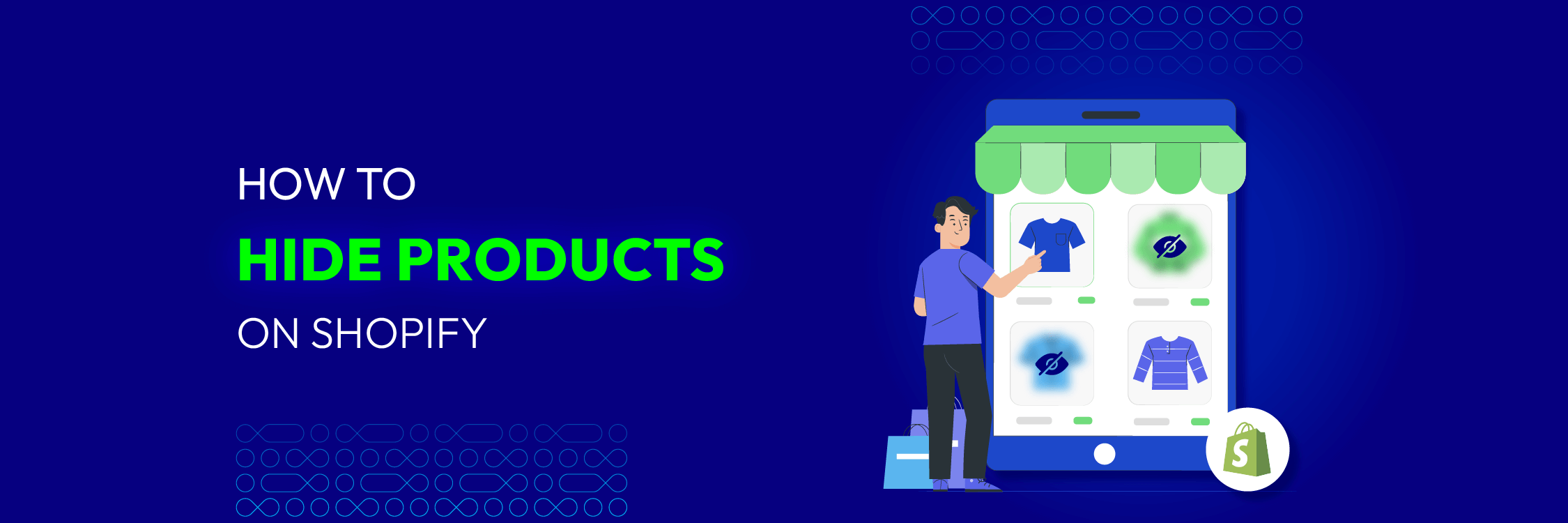Is Email Marketing Dead? Definitely No

Marketing via email has been a key component of many businesses’ marketing plans for decades, and some businesses depend on it a lot. But the question is whether email marketing will still work in 2025 or if we should stick to other types of marketing.
Read this piece to get rid of any doubts you might have about how well email marketing works. This should answer both your and my questions about whether it is dead or still worth your time and money. Finally, let’s get started!
Why Email Marketing Isn’t Dead?

In 2025, email marketing is thriving based on data and client experiences. Doing it right is crucial. To get quality leads, focus on nurturing, personalization, and targeted emails. Prioritize enhancing the customer experience over quantity-driven sales.
For instance, provide informative emails to guide buyers. In 2025, customer service (CX) is essential for business growth. Here are five reasons why this approach remains highly effective, driving significant sales.
Everybody uses email and always will

Email is a crucial way for people to connect globally. In 2022, 3.9 billion people used email, and it’s expected to hit 4 billion in 2023. This rise is linked to the impact of COVID-19, pushing even less tech-savvy individuals to embrace email for remote work and daily needs. From the elderly to Generation Z, email is used by everyone, highlighting its importance for communication and emphasizing its role in B2B content marketing strategies for 2023.
Deliver strong ROI YoY
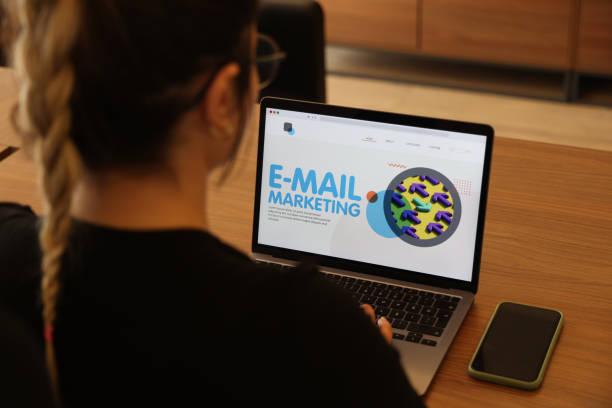
Email marketing remains strong because it consistently delivers a solid Return on Investment (ROI), averaging $42 across various industries over the past five years. It has proven to be financially effective, with sectors like Travel, Media, and e-commerce seeing even higher returns.
Looking ahead to 2023, the integration of Artificial Intelligence (AI) has the potential to further boost its effectiveness. Businesses seeking reliable and financially rewarding marketing strategies can count on email marketing to maximize their efforts.
Business communication via email is preferred
Email is still the top communication method for professionals (86%). Interestingly, 73% of millennials prefer email for business. Official emails are essential for communicating with consumers and partners due to their formality and responsibility. Despite the quickness of chat applications, email marketing is essential for building trust and professional connections.
Affordable accessibility

Email marketing is strong because it is cheap and easy to use, which is important to remember. There are basic plans from vendors, and some are even free, so businesses of all kinds can use them.
Email marketing is a cheap way to get leads without spending a lot of money. This is true whether you use basic features from platforms like SendinBlue or more complicated tools like GetResponse or HubSpot. In a market that is already full, the fact that it is cheap makes it more appealing for businesses to get into digital marketing.
AI Empowers Email Marketing
AI has changed email marketing, making it stronger and more efficient. Recently, AI tools that were only available to big businesses started to be available to small businesses as well.
These tools make email marketing more effective by automating content, making subject lines better, and looking at data trends. Using AI isn’t just a trend; it’s a smart move for companies that want to do well in the digital world, as it increases their return on investment (ROI) and lowers their reliance on subjective human experiences.
How Effective Is Email Marketing?
First off, email marketing is the act of sending promotional messages, such as your latest discounts and offers, or insightful news to people in mass quantities to produce sales or leads. Therefore, it usually includes advertising.
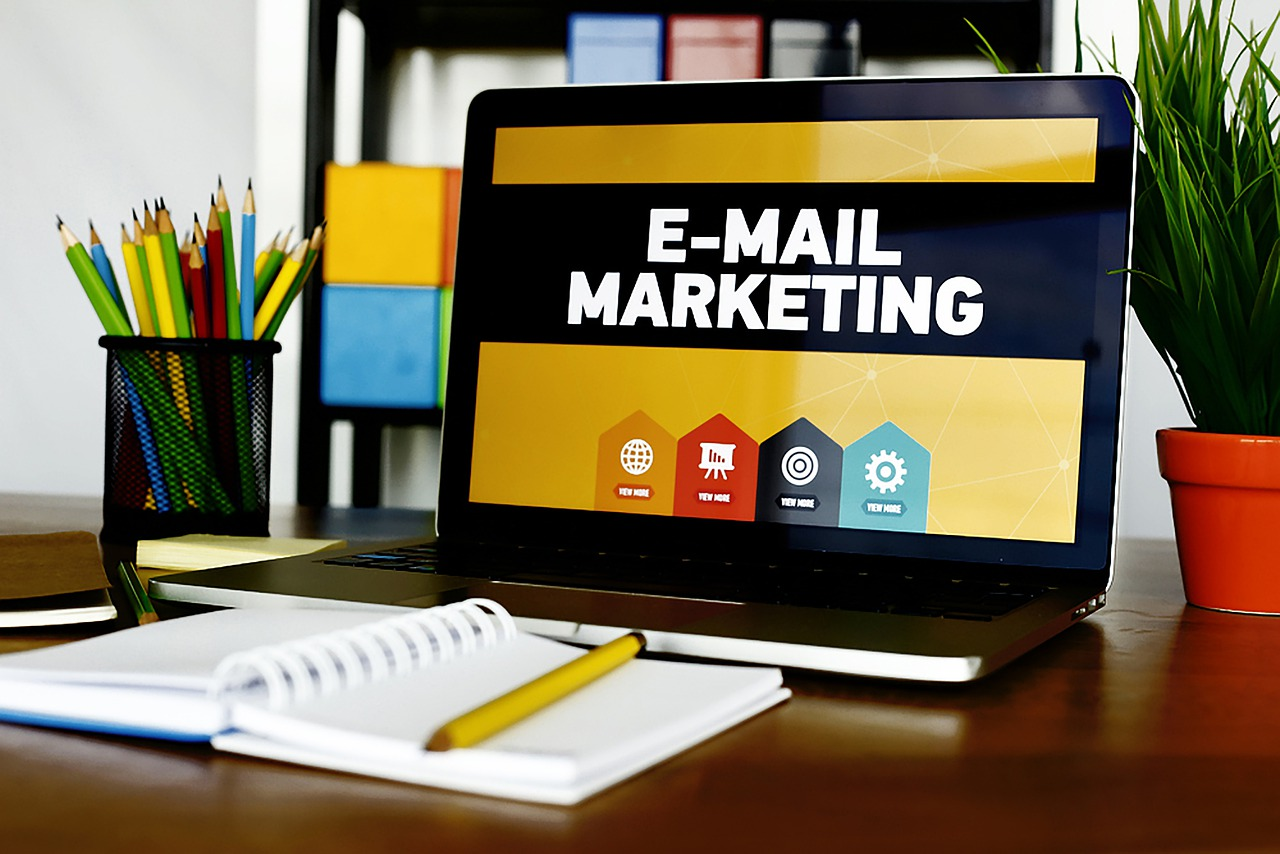
In a world where contact through social media platforms has become the norm, email marketing mightn’t stay top of the mind with online merchants when it comes to marketing campaigns. However, it’s still a formidable name and a popular business marketing tool.
As you may know, the holy grail of email marketing is personalization. Beyond a shadow of doubt, email marketing comes along with its own ins and outs. Honestly, it deserves a big round of applause for the following reasons.
Email Marketing Has a Huge Reach.
The number of global e-mail users reached 4 billion in 2020, and it is expected to reach 4.6 billion by 2025. Besides, approximately 306 billion emails were sent and received every day worldwide in 2020. Meanwhile, in the same period of time, social media usage is over 3.6 billion.
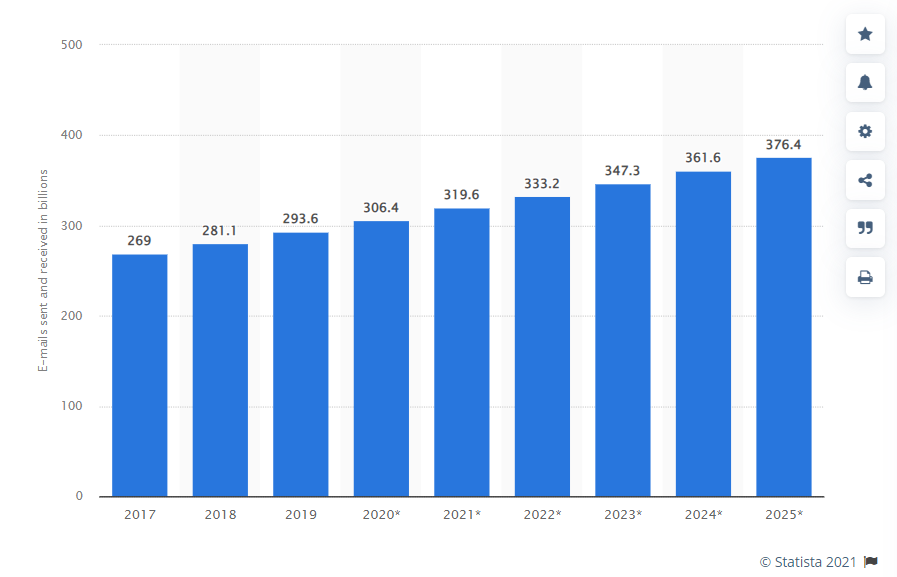
As marketers, we love statistics, that’s why I’ll prove the importance of email marketing through data-driven reasons:
- 73% of millennials consider email as their favored method of business communication.
- 99% of customers check their email every day.
- 58% of investors check email first thing in the morning, compared to 14% of social media users.
- 60% of investors consider email as their preferred promotion channel.
With these impressive-sounding numbers, it’s explainable why email marketing is such a popular choice for marketing initiatives.
Email Marketing Delivers Your Messages with Personalized Content.
Emails can cut the noise of social media and give your audiences personalized content that will also create a sense of professionalism. In fact, tailored emails result in a 6x greater transaction rates and a 14% increase in click-through rates. Besides, 74% of digital marketers say that targeted personalization also increases engagement.

For customers who don’t get complacent with social media, email marketing can help your business leverage your competitors. Besides, you can also create your own email list for long-term marketing campaigns.
On the whole, email marketing helps to not only boost brand awareness but also increase customer loyalty and lifetime value.
Especially, one of the biggest advantages of email marketing is that it offers immense scope for B2B marketers. In fact, 93% of B2B marketers use email as a tool for content distribution. This method of communication is more trustworthy and credible than others.
Email Marketing Drives Traffic & Conversions.
Email marketing isn’t only about getting your campaign in front of your audience, raising their awareness, but also converting customers. First off, even if your email marketing campaign can’t complete the desired action you initially set, it can drive tons of traffic to your site.

- Email is one of the top free organic distribution methods for B2B marketers, according to 87% of them.
- When it comes to acquiring new clients, email is about 40 times more effective than Facebook and Twitter combined.
Transparently, email marketing is an effective method to not only keep customers engaged but also generate and nurture leads.
Email Marketing Is a Cost-Effective Option.
While paid marketing campaigns can cost you a pretty penny, email marketing doesn’t require an incremental budget. You won’t have to pay for the print, postage, ad space, or any of the other expenses that come with it.

In fact, companies spend as much as 30-60 times more on TV, print, and Internet advertising than on email marketing. Therefore, email marketing can work on the budget of businesses of any size and type. Via emails, you can connect with your audience in a highly targeted way while staying on budget.
Email Marketing Isn’t Dead
For the sake of demonstration, I’ll use numbers to separate email marketing facts from opinions. Then you might see that email marketing isn’t dead as numbers never tell lies.
Email Marketing Return on Investment.
It’s worth reaffirming that email delivers better results than any other channel. According to a study, email has an average return on investment (ROI) of $42 for every $1 spent. It’s three times higher than the number of social media!

With such a huge ROI potential, you can easily increase sales and grow your business. Besides, email is 40% better at converting in comparison to Facebook and Twitter.
Email Marketing Engagement
Email marketing engagement indicates the way your subscribed contacts interact with your email campaigns.
Despite having a large number of users, some prominent social media platforms, such as FaceBook, Instagram and Twitter have an average engagement rate per post of 0.27%, 1.16%, and 0.07% respectively.
Meanwhile, the average open rate, click-through rate, and click-to-open rate of email marketing are 18%, 2.6%, and 14.1%. These statistics manifest a high-level overview of email marketing engagement, which is much brighter than that of social media platforms.
Besides, you can also make use of marketing automation as it can result in 70.5% higher open rates and 50% higher conversion rates. Automated messages also bring about 150% higher click-through rates.
Some Common Email Marketing Mistakes & How to Avoid Them
Sending Emails to Unreliable Email Lists
If your recipients are not engaged with your brand or your content, your email marketing campaign might face low open rates. Consider it like a snowball on its way to becoming an avalanche: low open rates cause Internet Service Providers (ISPs) to reject your future emails, which leads to even lower open rates, and lower engagement.
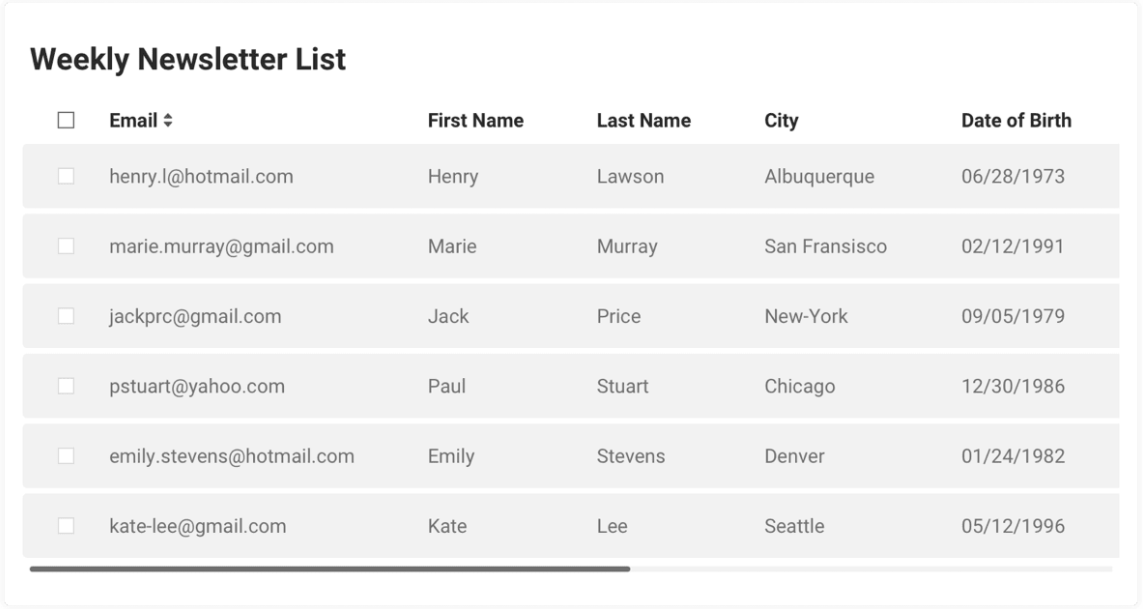
That being the case, it can be grueling at times to find proper prospects to create an ideal business email list. However, there exists a glut of useful tools to put your mind at ease, such as Snov.io, Hunter.io…
Key takeaway:
- Instead of buying email lists, you’d better revamp your list with organic and converting email addresses.
- Make a segmentation of your email list since marketers who used segmented campaigns witnessed as much as a 760% increase in revenue.
Penning Poor Subject Lines
A poor email subject line can result in low email open rates, and of course, low response and success rates. If you spend time and nerves creating content for your outreach emails but your subject lines aren’t attractive enough to take a glance at, your emails will be left unopened. Such a waste!
It’s not exacerbated to state that a catchy email subject line can hold the answer for a successful email marketing campaign. In number, 64% of email recipients make a decision to open emails based on subject lines, and 69% of them report emails as spam after reading the subject line. In March 2021, spam messages made up 45.1% of all emails. Therefore, subject line optimization is critical to help your message get noticed and stand out in a cluttered inbox.

Key takeaway:
- Emails with 6 to 10 words in the subject lines have the highest open rate at 21%.
- Including the word “alert” in your subject line increases open rates by 61.8%.
- In BEC email subject lines, “request” is the most commonly used term.
- Including the recipient’s name in the subject line can boost the likelihood of them opening your email by 18.30%.
- Subject lines that convey a sense of urgency and exclusivity have a 22% greater open rate.
- Emails with emojis in their subject lines have a 70% increase in the effectiveness of marketing.
Sending Emails That Lack Personalization
If your email marketing approach is suffering from a severe lack of personalization, it can cause huge issues. How can you impress the customers when the messages they get from you are too poorly targeted? Mass email is a spray-and-pray approach that may harm your campaigns’ overall effectiveness.

In number, according to 74% of marketers, targeted personalization boosts consumer engagement, and results in a 20% increase in sales.
Key takeaway:
- Mention the names of the customers in both the subject lines and the email content.
- Make use of the implications of their gender, location, age, and any other information you have about them.
- Segment and scan your email list in order to send the most relevant content regarding their pain points to improve the click-through rate.
Offering Too Much Information
Imagine you open an email and get inundated with a flood of information, that email seems a tad bossy. Along with an attractive subject line, the relevance of your email is the pinnacle of a successful email marketing campaign.
The average worker receives at least 121 emails every day, and their inboxes are clogged. Be relevant! If your content can’t grab your reader’s impression in 5s, your email is likely to end up in the trash.
Key takeaway:
- Your emails should be chock-full of benefits for your recipients, particularly your marketing campaign’s unique value proposition (UVP).
- Your emails should include simple yet inspired and encouraging CTAs. Also, enabling email security protocols increases the deliverability rate and boosts the domain’s credibility. Cross-check your email’s security compliances with an email header analyzer tool
Sending Emails at a Wrong Time
As a matter of fact, timing is always important. Not only when but how often you promote your outreach and follow-up emails will hold the answer for the success of your email marketing campaign. An engaging, informative and entertaining email sent at the wrong time is still trash or remains forever unread.
Consider this scenario: your marketing team has spent numerous hours crafting the perfect email to capture your audience’s interest. You hit the send button, but your emails remain unopened. That might be because you sent your emails at the wrong time and your marketing has gone to waste.
What’s even worse is that the email open rates will drop to about 1% after your email lands in an inbox for more than 24 hours.
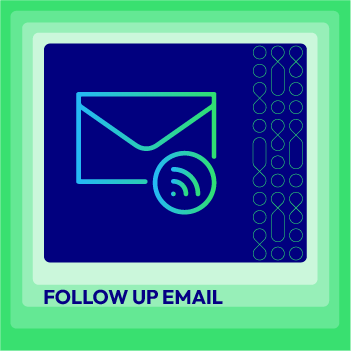
Create automatic email chains for higher conversion rates and better sales
Check it out!Key takeaway:
- Delivering email campaigns on Tuesday, Wednesday, and Thursday to avoid Monday’s agony and Friday’s itchy feet.
- Mid-Week, Mid-day: The ideal times to send emails is between 1-3 pm (9-11 am is recommended as well)
- Using tools such as Timeis to find a proper time to send emails.
- Sending your emails at the optimal frequency. Building a general campaign timeline to give you parameters to work within.
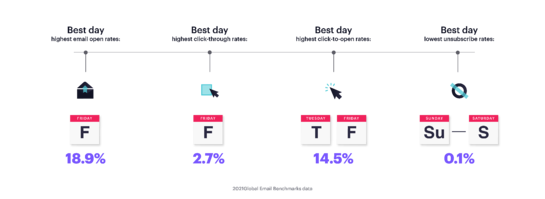
Blending Email with Other Digital Marketing Strategies
Combining email marketing with other digital strategies like social media, content marketing, and SEO strengthens your overall marketing efforts. This integration allows you to create a more coordinated approach, enhancing your ability to reach and engage with your audience across multiple platforms.
Leveraging email in conjunction with these strategies helps to amplify your message and maximize impact. For instance, social media can boost email subscriptions, while email campaigns can direct traffic to your content and improve SEO outcomes. This holistic approach ensures that your marketing activities work together seamlessly to achieve better results.
The Prospects of Email Marketing
Despite the rise of new digital marketing channels, email marketing continues to offer significant opportunities and remains a vital component of a modern marketing strategy. The future of email marketing looks promising for several reasons:
-
Personalization: With advancements in data analytics and AI, marketers can craft highly tailored email campaigns that address individual preferences and behaviors. Personalized emails lead to higher engagement rates and conversion, making them a key driver of future email marketing success.
-
Tech Integration: Email marketing is expected to integrate more smoothly with emerging technologies such as AI and machine learning. These technologies will enhance the ability to segment audiences, predict customer behavior, and automate personalized responses, making email marketing more efficient.
-
Mobile Optimization: As mobile device usage continues to grow, email marketing will increasingly prioritize mobile optimization. Future email campaigns will focus on delivering responsive, mobile-friendly content that provides a smooth and engaging user experience across all devices.
-
Data Privacy: With growing concerns about data privacy and new regulations, the future of email marketing will emphasize compliance and transparency. Marketers will need to navigate evolving privacy laws while maintaining trust and delivering value to subscribers.
Conclusion
Since the rise of social media platforms, the question “is email marketing dead?” has become more pertinent. At the end of the day, it can be reaffirmed that email marketing isn’t dead.
The marketing campaign in general, the email marketing campaign in particular involves a lot of ideas, decision-making, observation. To fully make use of the full force of email marketing, you should carefully plan your email marketing campaign using SMART goals (specific - measurable - attainable - relevant - timely).
Each marketing campaign has its own goal and target audience, thus, some certain marketing channels seem not to make sense. If you want to reach the widest audience, you can run your marketing campaign on several channels, including paid, earned, shared, and owned channels, both in-person and online. Make sure your messages are timely, personalized, and targeted. That said, you can consider integrating email marketing with social media strategies.
As the world and the market are constantly changing, every strategy must adapt, grow, and innovate. If you think email marketing is dead, you are losing the game. It’s time (past time, actually) to revamp your email marketing strategy to help your business flourish in a long-haul play.


